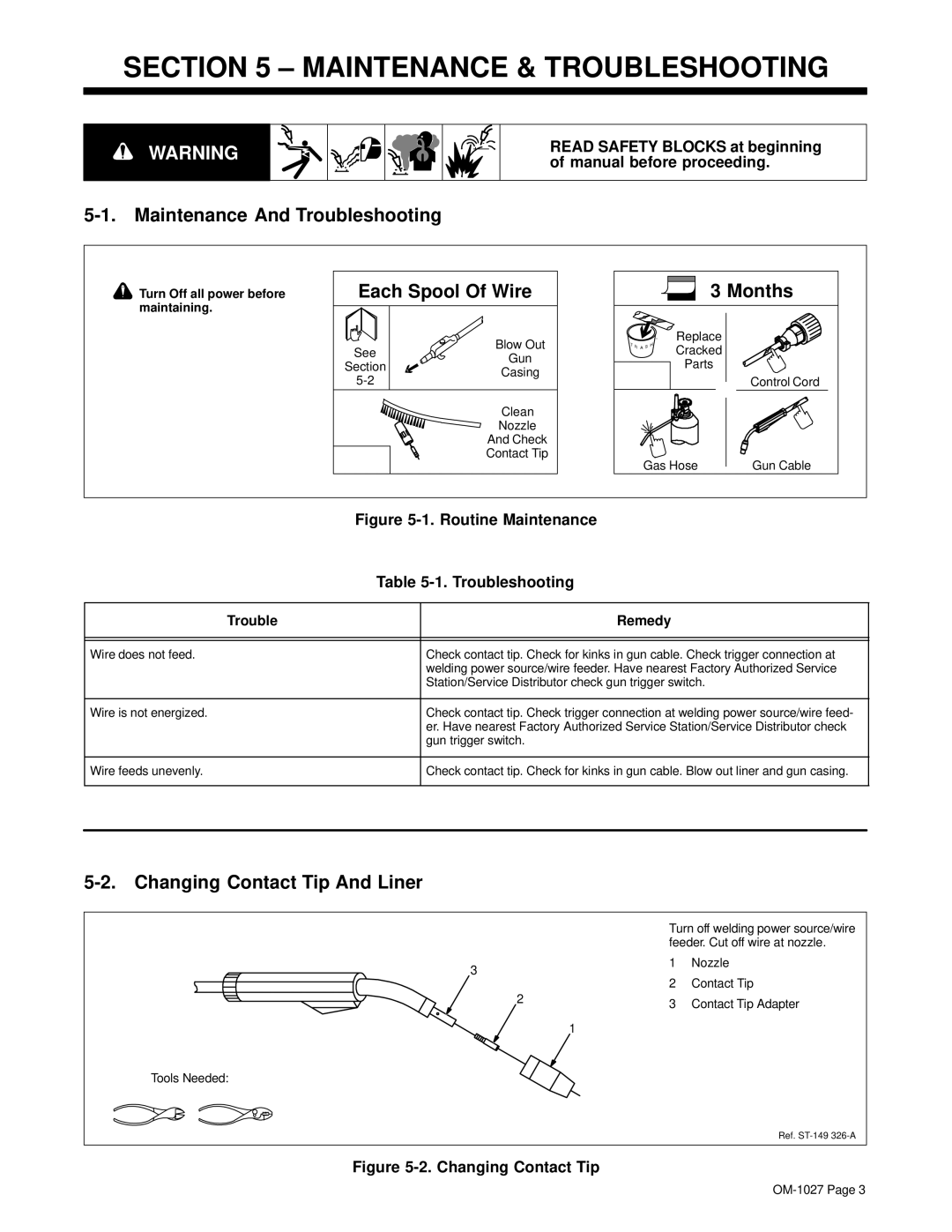GA-16C1, GA-16C specifications
The Miller Electric GA-16C and GA-16C1 are state-of-the-art arc welding power sources that are widely recognized for their robust performance and user-friendly design. These machines are specifically engineered to meet the demands of diverse welding applications, making them suitable for both professional welding environments and hobbyist use.One of the main features of the GA-16C and GA-16C1 is their advanced inverter technology. This innovation allows these units to deliver a consistent output with increased efficiency, resulting in reduced energy consumption. The inverter design not only enhances performance but also contributes to a lighter and more compact machine, which is particularly advantageous for portability.
Both models are equipped with digital displays that provide real-time feedback on voltage, amperage, and other critical parameters. This feature enables welders to make precise adjustments on-the-fly, ensuring optimal results regardless of the material or thickness being worked on. The intuitive interface is designed for ease of use, allowing operators to quickly familiarize themselves with the settings and functions.
Another noteworthy characteristic of the GA-16C and GA-16C1 is their versatility. These machines support multiple welding processes, including MIG, TIG, and Stick welding, which broadens their usability across various projects. The units are compatible with different gas mixes, allowing for fine-tuning of the weld quality according to the specific requirements of the job.
Durability is also a key aspect of the GA-16C and GA-16C1. Built with high-quality components and rugged housings, these machines are designed to withstand the rigors of industrial environments. The cooling system effectively manages heat build-up, prolonging the life of the equipment.
Safety features are integrated into both models, including overload protection and a responsive thermal cut-off mechanism. These features provide peace of mind for operators, ensuring that the machine will halt operation in the event of any irregular conditions, thereby preventing damage and maintaining safety standards.
In conclusion, the Miller Electric GA-16C and GA-16C1 are exceptional choices for anyone seeking a reliable, efficient, and versatile welding power source. With their advanced technologies, user-friendly interfaces, and robust design, these units cater to a wide range of welding needs while providing operators with the tools required for precision and safety in their work. Whether for professional use or personal projects, the GA-16C and GA-16C1 stand out as exemplary machines in the welding industry.

